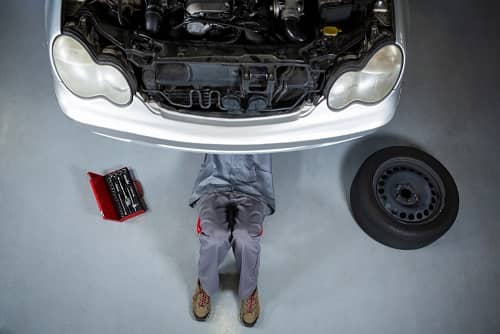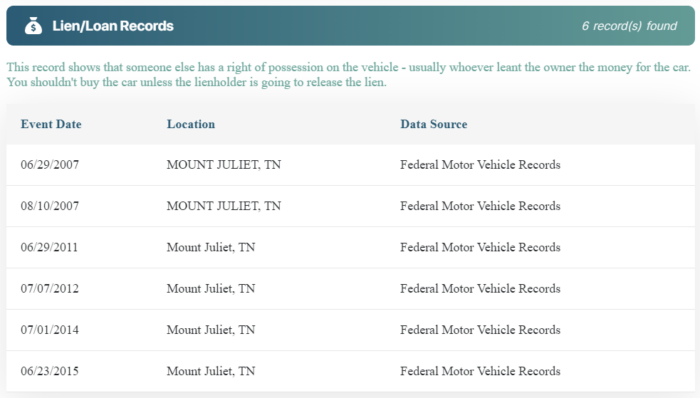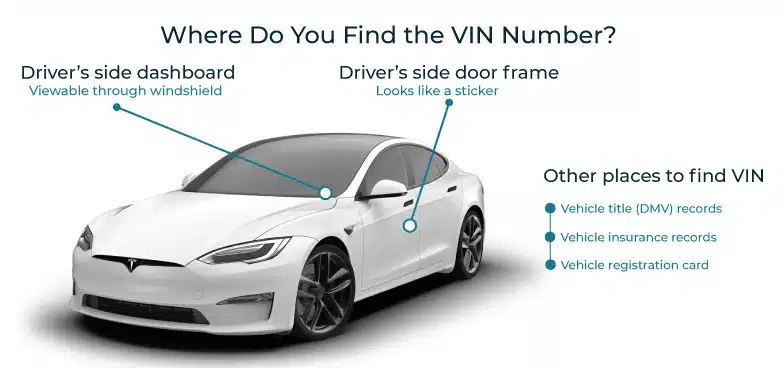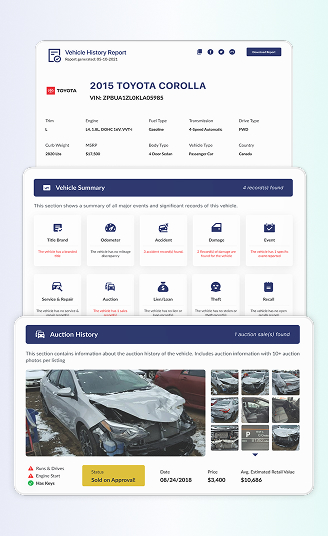
Triumph Recall Check
Your Triumph is built to stir the soul. But even legends aren’t flawless. If a part risks your safety or fails U.S. rules, Triumph (and regulators) step in so you get a free fix. That’s what a Triumph Recall Check is about. A clarity, safety, and peace of mind powered by Detailed Vehicle History.
What is a Triumph Recall?
Triumph builds character-rich motorcycles, from the classic Bonneville to the razor-edged Daytona. Still, complex machines can have defects. When Triumph or U.S. safety officials find a safety risk or a rule miss (like lighting that doesn’t meet FMVSS), a recall is launched, and owners get free repairs through authorized dealers.
In the U.S., the National Highway Traffic Safety Administration (NHTSA) oversees this, while emissions-related recalls can also involve the EPA. In short, a Triumph recall is an official program to fix a safety or compliance problem on your bike at no charge.
Why You Should Check the Triumph Recall History?
Running a Triumph Recall Check is crucial for both used vehicle buyers and owners. For used triumph buyers, it helps to ensure that the vehicle they are interested in purchasing has no outstanding recalls that could potentially put them and their passengers at risk.
For owners, it allows them to stay ahead of any safety issues and avoid potential accidents caused by faulty equipment or parts. Neglecting to run a Triumph recall check could result in costly repairs, accidents, or even worse, injuries.
Below are some extra reasons why you should check the recall:
Avoid Unsafe Triumph
Any vehicle can develop safety problems, and Triumph is no exception. A quick recall check tells you if your vehicle has any outstanding campaigns that affect safety. If it does, schedule the no-cost fix and keep the service record. It’s a simple step that helps make sure your Triumph is safe for you and your passengers.


Compliance
Run a recall check before you commit. By law, automakers must alert owners to safety defects and provide free repairs. Confirming your Triumph’s recall status helps you avoid paperwork problems, supports insurance and financing, and protects resale value. A Triumph with open recalls may not meet federal safety standards, which can make ownership and future sale more complicated.
Avoid Out-of-Pocket Repair Bills
Run a Triumph recall check before you buy or sell. Safety defects are fixed free by the manufacturer, which can save you thousands compared to paying for similar repairs yourself. Giving you peace of mind.

How to Run Triumph Recalls?
Discovering your Triumph recall report is just a minute away! Follow these easy steps to get the information you need quickly and effortlessly:

Find your Triumph VIN
You'll need your Vehicle Identification Number (VIN) ready. Look on the driver’s side dashboard (through the windshield) or the driver’s door jamb. You can also find the VIN on your title, registration, or insurance card. Our lookup works for classic and current Triumph models.


Enter your details
Type your VIN in the form above. No VIN handy? Use your license plate number instead.


Receive Your Triumph Recall Report
We’ll show any open Triumph recalls immediately, plus key details and next steps. If a recall is listed, book the free repair at an authorized Triumph dealer for peace of mind.
What is on the Triumph Recall Check?
In your Detailed Vehicle History, the Triumph recall check lists any safety recalls tied to your vehicle. Each entry shows the announcement date, the affected component, and the recommended next steps.
Explore the details below for more information:
- Date of recalls: Shows when Triumph and NHTSA issued the recall, helping you judge urgency and confirm our data is timely, accurate, and decision-ready.
- Affected Component: Identifies the exact Triumph part involved, so you know what’s wrong and can discuss repairs confidently with any dealer or mechanic.
- Remedy: Details the manufacturer’s free fix. You’ll see where to go and what’s covered, reducing hassle and avoiding out-of-pocket surprises.
- Next step for the affected Triumph: Confirm if your Triumph is listed under the recall and schedule repairs. With a complete Vehicle Report, you’ll also see past recalls and repair status.
A Triumph vehicle history report also includes ownership records, title check records, accident records, mileage records, and more. Review the records below:

Ownership Records
The number of owners, durations, and regions paint a picture of how a Triumph was used and cared for.
Title Check Records
If a Triumph changed states or picked up a salvage/rebuilt/lemon title, you’ll know. Title status influences insurance, financing, and sale speed hugely.


Accident Records
See if your Triumph has crash history, dates, severity indicators, and counts. That context helps you judge whether a recall-related repair happened after damage, or vice versa, for smarter negotiations.
Mileage records
Track the mileage trail on your Triumph. Consistent readings build confidence; anomalies signal fraud or cluster swaps worth investigating.


Theft Records
We flag theft/theft-recovery events linked to your Triumph so you don’t inherit a headache (or a bike that’s tricky to insure).
Loan & Lien Information
Active liens can block a sale. We surface finance flags so your Triumph hand-off doesn’t stall on paperwork day.

Common Issues Leading to Triumph Recall
Triumph vehicles have faced several recalls due to safety and reliability concerns. Common issues include engine failures due to lubrication issues, wiring problems that can cause fires, and brake system malfunctions.
When checking for a Triumph, several factors come into play. Here’s a breakdown of elements that could affect your Triumph and lead to a recall:
Sudden Power Loss
Engine Lubrication Failure
Oil can slosh under hard deceleration and starve the crank bearings, damaging the engine and risking a crash. Triumph’s latest recall (25V531) was submitted August 19, 2025; dealers will increase oil capacity and fit a redesigned dipstick. Owner letters planned for September 17, 2025.
Brake System Failures
Front Disc Detachment
Some Bonneville T120/T120 Black bikes had an improperly secured left front disc (23V146); owner letters mailed March 17, 2023.
Rocket 3 Rear Brake Master Cylinder
On certain 2020–2024 models, the rear brake could require a longer pedal travel, lengthening stopping distance, especially after storage (23V730; notices November 2023).
Brembo Front Pads
020 campaign replaced pads that could shed friction material and reduce braking power (20V236; recall began June 26, 2020).
Electrical Shorts & Overheating
Alternator–Harness Wiring
24V785 (Issued October 2024) covered modern-classic models; wires could chafe, short, overheat, and in the worst case, create a fire hazard. Owner notification began November 18, 2024; dealers install a wire-alignment clip.
Harness Chafe From Clutch Cable
19V133 (Reported Feb 27, 2019) warned the clutch cable could damage the main harness, killing lights or stalling the engine.
Engine Stall From A Blocked Map-Sensor Hose
Trident 660, Tiger Sport 660
An obstructed restrictor in the MAP hose can feed bad pressure data to the ECU, causing a rough idle or a stall. NHTSA 23V583 was filed August 16, 2023; Triumph’s fix is a revised three-part hose. A stall mid-corner or in traffic is no joke.
Parking Stability
Side-Stand Bending (Trident 660)
NHTSA warned that the side-stand leg could bend over time, making the bike lean too far or even topple. The remedy was a stronger stand. Not dramatic at speed, but still a real “whoops” risk in your garage or a crowded lot. This recall was under the 22V062 campaign, owner letters mailed on March 2, 2022
Other Notable Issues
Rear Indicators Too Close To Tail/Brake Lamp (Speed Twin Family)
NHTSA found red rear turn signals mounted too close to the tail/brake lamp, making your intent harder to read, especially at night. Triumph replaces the red units with amber ones, free of charge. This recall was under the 25V141 (March 2025)
Understanding the Triumph Recall Process
NHTSA reviews safety complaints and, when a defect is confirmed, the automaker must issue a recall under NHTSA oversight. You can then check your Triumph by VIN and get a free remedy at a dealer.
Discover the full breakdown of the Triumph Recall Process below:
Report the Problem
Notice something unsafe on your Triumph? File a complaint with NHTSA. Your report is logged, compared across VINs, and helps trigger formal investigations.
Investigation
Once a complaint is submitted, the NHTSA follows a multi-step process to determine whether a recall is necessary.
- Screening: NHTSA’s Office of Defects Investigation reviews patterns in complaints and other data.
- Analysis: Defect petitions are reviewed in detail. If denied, the decision and reasoning are publicly posted in the Federal Register.
- Investigate the Issues: When Triumph’s safety concerns are confirmed, NHTSA launches a formal investigation, ending in either no defect or a recall.
- Recall Management: NHTSA ensures owners are notified and monitors repair completion rates.
Recalls
A safety recall means the manufacturer must inform owners and correct the problem. Recalls happen when a vehicle or component is unsafe or doesn’t meet regulations. Most are voluntary, and manufacturers are required to repair, replace, refund, or buy back the affected vehicle.
How Triumph Vehicle Recalls Are Handled?
When a safety problem is found on a Triumph, three groups work together: the manufacturer, NHTSA, and you, the owner.
This teamwork finds defects, informs drivers, and makes sure fixes are completed to keep your vehicle safe and legal. Below is a detailed breakdown of each role
Automaker Role
Triumph identifies issues from testing, field reports, and supplier audits. When a safety risk or rule miss is confirmed, it files a Part 573 report with NHTSA, defines the VIN scope, parts, and remedy, and mails owner notices, typically within 60 days. The U.S. campaigns are run by Triumph Motorcycles America. Triumph remains responsible as an ongoing brand owned by Bloor Holdings.
NHTSA’s Role
The NHTSA oversees Triumph recalls, ensuring Triumph provides free and effective repairs. They monitor compliance, track progress, and safeguard drivers and passengers from potential safety risks.
Your Role as the Vehicle Owner
Your part is simple yet important: check your VIN, read the risk, and schedule the free fix. Under federal law, free remedies generally apply for many years (see 49 U.S.C. §30120).
The owner letter must be mailed within 60 days after Triumph files its Part 573 report; if a remedy isn’t ready yet, you’ll receive a follow-up letter when it is. Keep the repair record once the dealer completes the work.
Get the Triumph Window Sticker by VIN
Before you buy or sell a Triumph, pull the window sticker by VIN. See exact model and trim, original factory options, paint and seat colors, installed packages, safety and tech equipment, and the original MSRP. It’s an easy way to confirm a seller’s claims, spot missing features, and price the bike with confidence. Pair it with your Triumph Recall Check for the full picture.

Why Use Detailed Vehicle History to Check Triumph Recall?
Our Triumph Recall Check doesn’t stop at “yes or no.” It ties recall IDs and dates to the bigger story: title status, previous damage, mileage consistency, ownership records, maintenance signals, and more. That connected view helps you avoid costly surprises, confirm what a seller says, and plan next steps with your dealer.
Clear data, friendly language, and actionable detail. So your next ride starts from a place of trust.
Recall Check For Others Manufacturers
FAQ about Triumph Recalls Check
How do I check if my Triumph has a recall?
Enter your VIN with Detailed Vehicle History for a full safety and history read-out. Triumph also offers a public VIN recall search; NHTSA lists U.S. campaigns by ID.
Can I check Triumph recalls by license plate?
Yes. Our Triumph license plate lookup converts the plate to the VIN, then checks recall status against official data. (NHTSA recall lookups themselves are VIN-based and cover incomplete recalls for about the last 15 years, including motorcycles.) It’s a quick way to screen a used Triumph before you ride or negotiate.
Are Triumph recall repairs really free?
Yes. Manufacturers must provide a no-charge remedy when a recall is issued. Federal law sets long-duration coverage windows for free remedies.
Do Triumph recalls expire, or is there a time limit on free repairs?
The recall record stays, however Federal law sets limits for when the no-charge remedy obligation applies after 15 calendar years from first retail sale. Modern rules recognize long windows (codified in 49 U.S.C. §30120).
You can still ask a dealer about parts or a paid repair on older bikes. Don’t delay! Schedule as soon as you’re notified.
Can I ride if my Triumph has an open recall?
Depends on severity. Some recalls include “Do Not Ride/Park Outside” advisories (e.g., engine-risk campaigns). Read your letter and follow the instructions.
What should I do if a Triumph dealership is unhelpful about a recall?
Document your visit, escalate to Triumph (customer service), and submit a complaint to NHTSA if needed, so the issue is on record.
What happens if there’s no fix yet?
You’ll usually get an interim letter and follow-up once parts/software are ready; NHTSA requires schedule updates and quarterly reporting until completion.
How long does a Triumph recall repair usually take?
There’s no fixed time. Simple campaigns can be done quickly; others wait on parts or software. Some recalls launch before a remedy is ready, so you may receive an interim letter and a second notice when parts arrive.
Are emissions recalls different?
Yes. EPA can require recalls when bikes don’t meet in-use emissions standards. Remedy is also free, but governed by Clean Air Act provisions.
Can I get reimbursed if I already paid for a related repair?
Often, yes. Recall notices state reimbursement terms and deadlines. Example: Triumph’s 24V785 allows reimbursement under its reimbursement program. Keep receipts.
Will a Triumph recall affect my registration, inspection, or insurance?
Rules can vary by state and insurer. Check your state DMV and your insurer’s terms if you’re unsure.
Will a Triumph recall hurt resale value?
An unrepaired recall can spook buyers. A completed recall with documentation can actually boost confidence and make a sale smoother. Especially when bundled with a full vehicle history report. Run your VIN to our tools, to convince buyers and increase their trust.
What if I’m buying a used Triumph and it shows an open recall?
Run the VIN on our Triumph recall check tool to confirm the recall, then schedule the free repair after purchase (or ask the seller to complete it first). Our tools bundle recall data with Triumph history data for smarter negotiations.
Can a dealer sell a used Triumph with an open recall?
At the federal level, yes. Selling used vehicles with open recalls is not broadly prohibited (though new vehicles must be recall-free before sale, and rental fleets face limits).
The FTC has stated this clearly; laws can differ by state, so always check the recall status before you buy a new or used Triumph.
Which Triumph models are commonly affected by recent recalls?
As of September 2025, the recalls include:
- Daytona 660 (engine lubrication remedy, 25V531),
- Bonneville T120 (brake disc fix, 23V146),
- modern classics like T100/T120/Speed Twin/Street Twin/Scrambler (alternator connector clip, 24V785), and
- Tiger/Street/Speed Triple runs (front brake pads, 20V236).
Always check your VIN.
What if I ignore a Triumph recall?
You risk crashes, fires, or stalling, and your bike remains out of compliance. NHTSA monitors recalls for exactly this reason. Book the fix.
Who “owns” Triumph? Is it part of another company?
Triumph is an independent UK manufacturer; the parent company is Bloor Holdings Limited (owned by John Bloor). U.S. recall campaigns are run by Triumph Motorcycles America.


